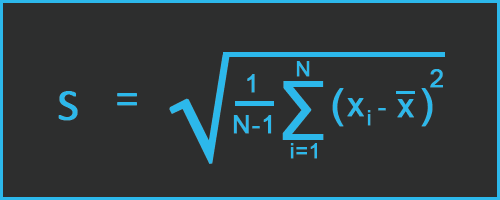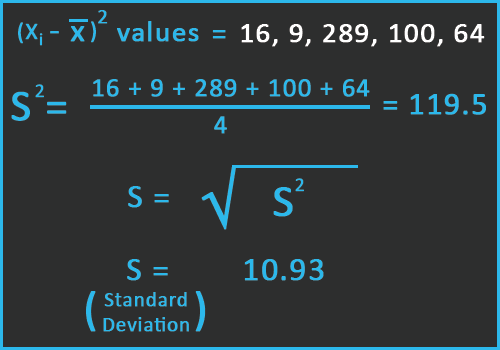How to Calculate Standard Deviation?
For easy understanding, we have divided the whole process into five simple steps.
- Calculate the Mean (μ)
- Subtract the mean from each data point
- Square each difference
- Calculate the mean of the square differences
- Take the square root of variance
So, let's take an example to understand above all steps one by one.
Example:
Suppose, the data set is: 22, 15, 35, 8, 10. Find out the mean, population variance, and population standard deviation.
Firstly, let's have a look at the population standard deviation formula.
The population standard deviation is equal to the square root of population variance.
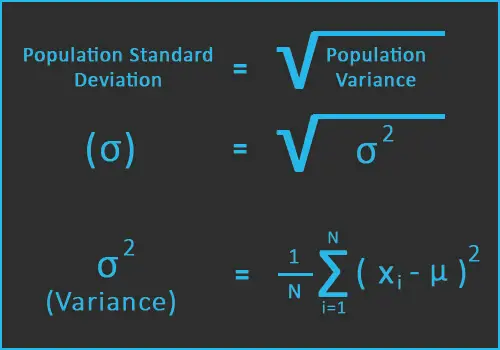
Where,
- σ = Standard Deviation
- ∑ = Sum of each
- Xi = Data points
- μ = Mean
- N = Number of data points
Now we are aware of the formula and its components. Let's do the calculation using the five simple steps.
1. Calculate the Mean
Firstly, we need to calculate the mean for a given set of numbers.
The mean is an average of total numbers. It's denoted as "μ" (The greek letter "mu"). Also, it's very easy to calculate the mean.
Just add up all the given data set values and then divide it by a total number of values. Also, if you are dealing with large numbers, you can use the mean calculator to make it easier and faster.
In our case, we have five values. So, we can calculate the mean like this:
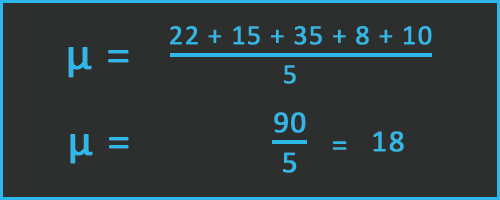
So, we get mean (μ) = 18.
Now let's jump to the next step.
2. Subtract the mean from each data points
In this step, we will subtract each data value with mean.
Here we have,
Data values (xi) = 22, 15, 35, 8, 10 and Mean(μ) = 18
So, now we will find (xi - μ).
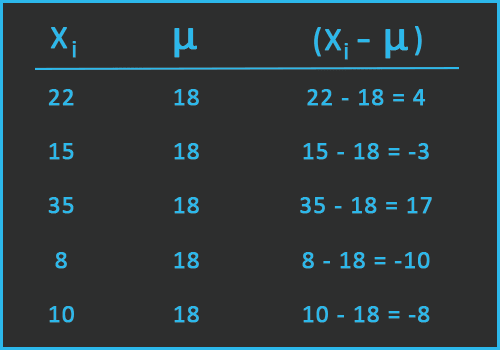
After subtraction, we get values = 4, -3, 17, -10, -8.
3. Square each difference
In this step, we will square all the values that we got from step 2. So, it will be calculated like this:
- (4)2 = 16
- (-3)2 = 9
- (17)2 = 289
- (-10)2 = 100
- (-8)2 = 64
Hence, we get the squared values = 16, 9, 289, 100, 64.
4. Calculate the mean of the squares
In this step, we will find the mean of squared values that we got from step 3.
Also, we will get Variance as a final output from step 4.
Now the question is What is Variance?
Variance is an average of the squared differences from the mean.
Let's see the formula of variance.
Variance Formula

As you can see, we already have found the values of (Xi - μ)2 in step 3. So, our next step is to calculate the variance using these squared values.
For that, we need to calculate the mean of squared values. In short, we need to sum up all the squared values and then divide it with a total number of values. That is 5.
Therefore, the calculation will be:
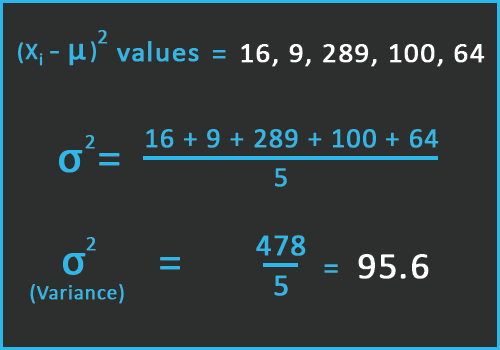
So, as a result, we get the population variance = 95.6.
Now, let's go to the final step and find the population standard deviation.
5. Take the square root of variance
In this step, we just need to calculate the square root of variance.
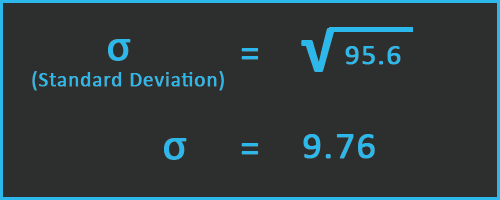
Finally, we get the population standard deviation = 9.76.
